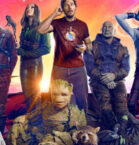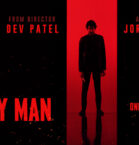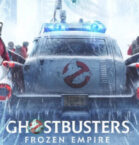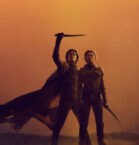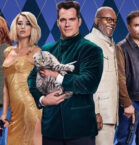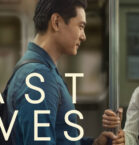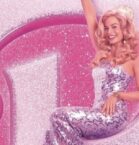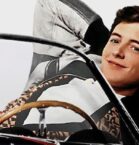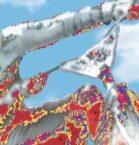Where the Wild Things Are
Maurice Sendak’s Where the Wild Things Are was first published in 1963. Since then, countless children have flipped through the wonderfully illustrated pages and enjoyed being invited into this world with a young boy and his imaginary friends. Meanwhile, Sendak’s work was lauded by adults as a wonderful insight into how children use creativity and imagination to cope with anger and confusion as they grow up and learn more about the world. He did all this in ten sentences. Spike Jonze, with a script he penned with Dave Eggers, has expanded on those ten sentences and given us playful visuals and even deeper insight into how children first become exposed to a reality that confuses them, how they use their own worlds of make-believe to cope with it, and how they later try to make sense of it once faced with the reality again. I saw quite a few kids in the theater when I watched this film, who responded to the furry – and sometimes scary – Wild Things onscreen. However, the more telling faces were those of the parents and other older moviegoers, myself included, who no doubt read the book before but more importantly have already experienced the process the young protagonist, Max, is going through. And it was the look on their faces that showed that Mr. Jonze has made a deeply personal, highly emotional film.

WHERE THE WILD THINGS ARE begins with a manic jolt, as Max runs around his house in a frenzy in his wolf costume. We later see the myriad of emotions the young boy deals with in a typical day: the elation and pride of building a snow fort, the sadness of the fort being torn down, betrayal at the hands of an apathetic sister, the fear at finding out – through the ramblings of a ridiculously insensitive teacher- that the sun will someday explode, and later competing for his mom’s attention with work and a new boyfriend. The mixture of confusion and fear on Max’s face as he sees his mother with the boyfriend (played for like a minute and a half by Mark Ruffalo), is the perfect explanation for his big tantrum, in which he bites his mother and runs off into the night.

We then embark on Max’s imaginary journey, by boat, to the mystical island of the Wild Things. This is the world created by Max’s imagination, so of course he is quickly crowned as their king. Still, just as Freud would say our dreams are affected by our experiences, Max’s imaginary friends embody many of the emotions and relationships he experiences himself and sees at home. He is quickly befriended by Carol, voiced by James Gandofini, who only asks that the king keep out loneliness and sadness, to which Max quickly agrees. But amid the fun times they have, even the best king/parent can’t keep everyone safe or handle every disagreement. Carol parallels Max in his tantrums and destructive handling of his emotions, while KW (voiced by Lauren Ambrose) acts as a Wild Thing counterpart to both Max’s mother and sister. As Max learns through his brief tenure as king, heading up a family is hard (not unlike the lesson Gandolfini learned as Tony Soprano), and he begins to empathize with the strains his mother faces as she tries to keep their family together.

Max Records plays the role of Max and, at age 12, Spike Jonze asks a lot of him in this movie. He pulls it off though, expressing countless emotions from fear to joy to loneliness to anger to confusion, mostly through body language and facial expressions. The Wild Things were created in Jim Henson’s Creature Shop, and it’s fitting that such emotionally expressive animatronic costumes come with Henson’s name on them since Max’s interactions with the creatures seemed as natural as every guest host of “The Muppet Show.” But I think the real hidden star of this film will be Catherine Keener, even with limited screen time. In that time, she will embody the mother of everyone watching the film who ever gave his/her mom a hard time, especially single mothers, which is a dynamic the film hits on more than Sendak’s book. She can break your heart as she tries to hold her family together, which is a struggle Max can only begin to understand from his experiences on the island, and a struggle we as our mother’s children do not fully understand until many years later. And Jonze taps into that with this story of a boy and his imagination based on ten sentences. It is an unforgettably emotional piece of art.
[fbcomments]

 Jeremey Gingrich
Jeremey Gingrich
